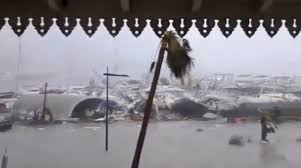
Members of the BoatUS Catastrophe team estimated that as many as 50% of the boats damaged during Hurricane Fran could have been saved by using better docklines: lines that were longer, larger, arranged better, and/or protected against chafing. If you decide to leave your boat at a dock, you'll need to devise a docking plan that is liable to be far different than your normal docking arrangement. By the time preparations are completed, your boat should resemble a spider suspended in the center of a large web. This web will allow the boat to rise on the surge, be bounced around by the storm, and still remain in position.
Take a look at your boat slip and its relation to the rest of the harbor. For most boats you'll want to arrange the bow toward open water or, lacking that, toward the least protected direction. This reduces windage. Next, look for trees, pilings, and dock cleats-anything sturdy-that could be used for securing docklines. With most docking arrangements, lines will have to be fairly taut if the boat is going to be kept away from pilings. The key to your docking arrangement is to use long lines, the longer the better, to accommodate the surge. (A good rule of thumb: storm docklines should be at least as long as the boat itself.) You will probably want to use other boat owners' pilings (and vice versa), which calls for a great deal of planning and cooperation with slip neighbors and marina management.
Lines should also be a larger diameter to resist chafe and excessive stretching. On most boats you should use 1/2" line for boats up to 25', 5/8" line for boats 25' to 34', and 3/4" to 1" lines for larger boats. Chafe protectors (see "Critical Points") must be on any portion of the line that could be chafed by chocks, pulpits, pilings, etc.
To secure lines to hard-to-reach outer pilings, put the eye on the piling so that lines can be adjusted from the boat. For other lines, put the eye on the boat to allow for final adjustment from the dock.